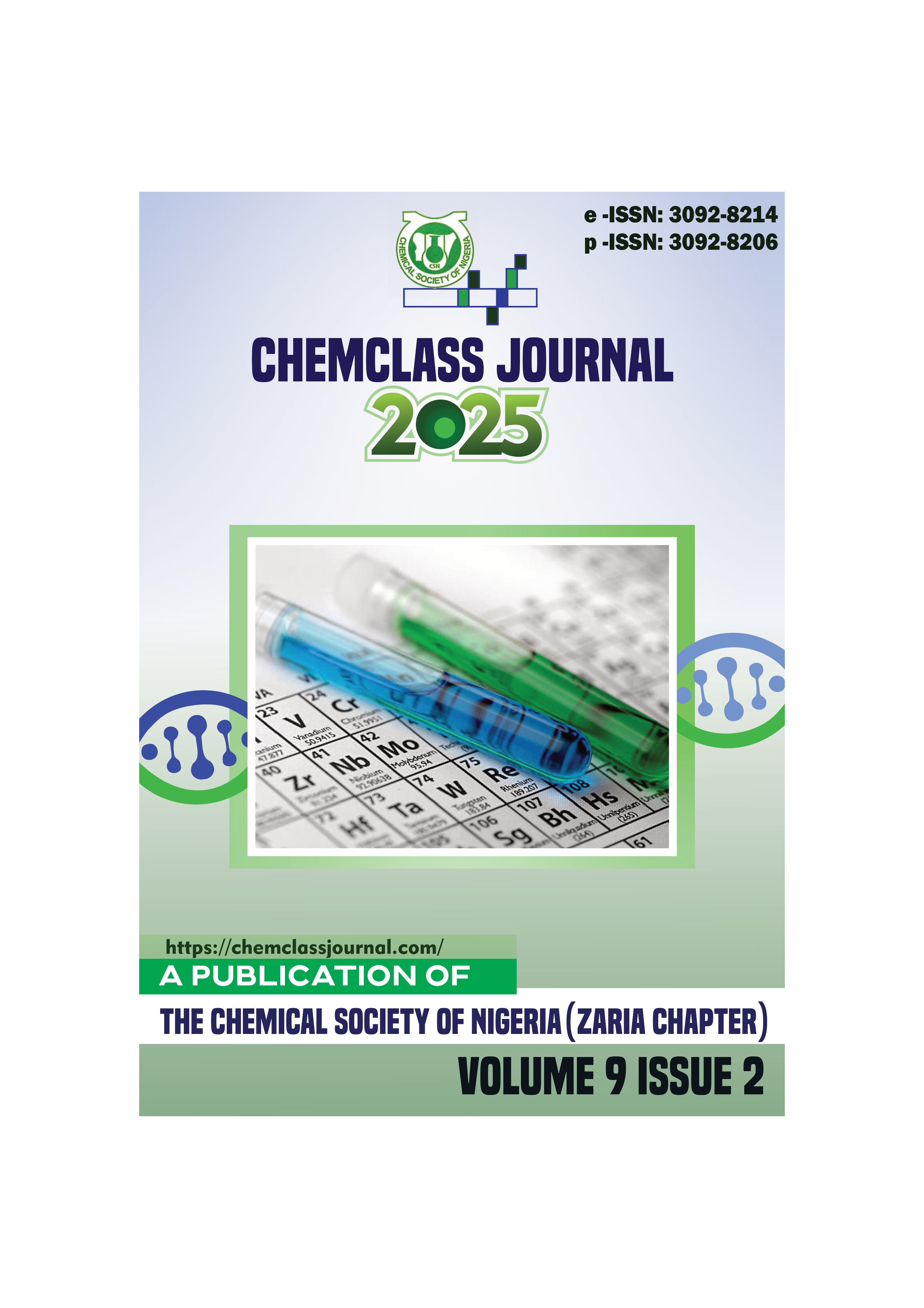Assessment of Heavy Metal Contaminants in Selected Soil and Yam of Some Areas of Keffi LGA Nasarawa State, Nigeria
DOI:
https://doi.org/10.33003/chemclass-2025-0901/142Keywords:
Agrochemicals , Bio-accumulation , Biomagnification , Contaminant , Heavy-metals , PollutionAbstract
This research aims to investigate the impact of heavy metal contaminants in soil and yam samples in
selected areas of Keffi LGA Nasarawa State, Nigeria. The concentrations of various heavy metals, including
manganese (Mn), copper (Cu), cobalt (Co), cadmium (Cd), zinc (Zn), and lead (Pb), were analyzed in both
soil and yam samples, using an AA320N-Atomic Absorption Spectrophotometer equipped with air-
acetylene burner. Additionally, soil properties such as pH, soil organic matter percentage, and soil
conductivity were examined. All samples have no detectable levels of Pb. Agwan Turu Mada had the
highest levels of Mn (490.75 mg/kg) and Cu (30.01 mg/kg), while Maraba Mesori had the highest levels of
Co (7.56 mg/kg) and Zn (87.71 mg/kg). The mean and standard deviation for the levels of heavy metals in
the yam samples were Mn-8.71 (+/-2.59), Cu-1.63 (+/-0.78), Co-4.97 (+/-3.87), Cd-0.74 (+/-0.83), Zn-0.93
(+/-1.08), and Pb-0 (+/-0). Keffi had the highest levels of Mn (12.29 mg/kg) and Zn (1.13 mg/kg), while
Maraba Mesori had the highest levels of Co (9.43 mg/kg) and Cd (1.01 mg/kg). Agwan Rimi Mada had the
lowest levels of all heavy metals except Cd (1.79 mg/kg). These values were within the acceptable limits.
The pH values ranged from 6.56 to 7.45, indicating slightly acidic to neutral conditions, which are suitable
for most crops. The soil organic matter percentages ranged from 4.00% to 5.75%, falling within the
desirable range for agricultural soils. Soil conductivity values ranged from 72.02 µS/cm to 202.60 µS/cm,
suggesting varying levels of salinity and nutrient availability. However, continuous monitoring and proper
soil management practices are crucial to mitigate potential risks associated with heavy metal contamination
and ensure long-term agricultural sustainability.





 ChemClass Journal
ChemClass Journal
